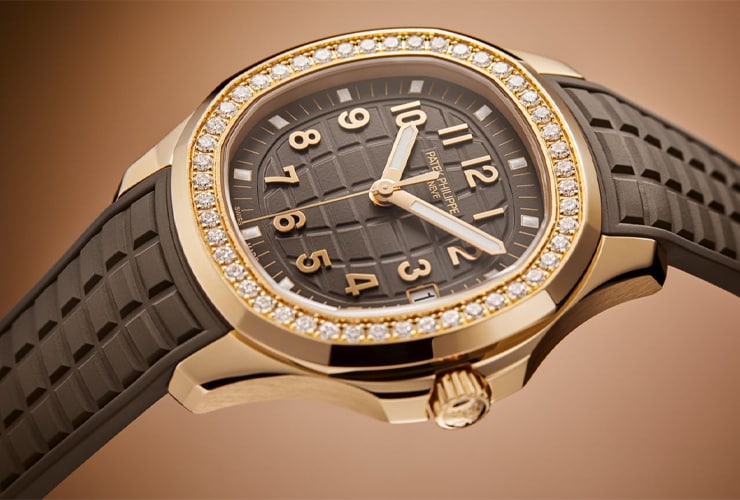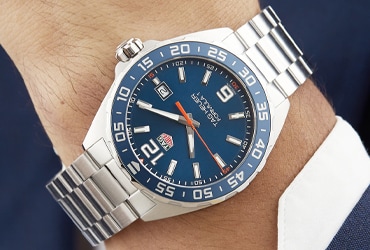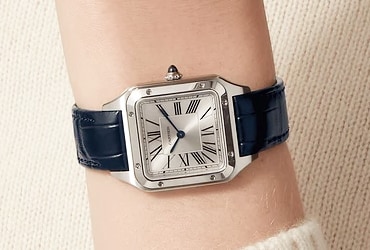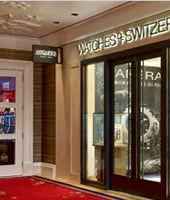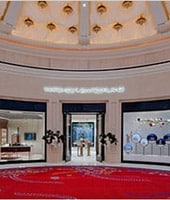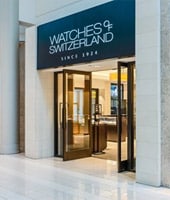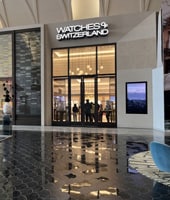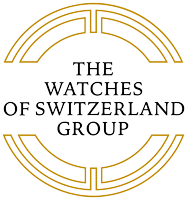-
Brands A-Z
-
Rolex
FeaturedBy Collection
- Rolex Certified Pre-Owned
-
Patek Philippe
- Pre-Owned & Vintage
- Mens
- Ladies
- Sale
-
Sell Your Watch
Sell your watchWe will expertly assess your watch and offer you
a competitive and accurate valuation for the
watch you wish to sell to us.Free valuation by our experts
Unrivalled knowledge & expertise
Competitive prices offeredBrands we buyA. Lange & SohneAudemars PiguetBlancpainBreguetBreitlingCartierIWC SchaffhausenJaeger-LeCoultreLonginesOMEGAPatek PhilippeRolexHeuerTudorVacheron Constantin - Stores
- Shop by Category
-
Brands A-Z
- Back
- View All Brands
-
Brands
- Rolex
- Patek Philippe
- Angelus
- Armin Strom
- Arnold & Son
- Berd Vay'e
- Blancpain
- Bovet
- Breguet
- Breitling
- Cartier
- Chopard
- Czapek
- DOXA
- Gerald Charles
- Girard Perregaux
- Glashütte Original
- Grand Seiko
- Greubel Forsey
- Hamilton
- H.Moser & Cie
- Hodinkee
- Hublot
- HYT
- ID Genève
- IWC Schaffhausen
- Jacob & Co
- Jaeger-LeCoultre
- L’epee 1839
- Longines
- Luminox
- Nivada Grenchen
- Massena LAB
- MB&F
- OMEGA
- Oris
- Panerai
- Parmigiani Fleurier
- QLOCKTWO
- Rado
- Raymond Weil
- Reservoir
- Ressence
- Speake-Marin
- TAG Heuer
- Tissot
- Tudor
- Ulysse Nardin
- Vacheron Constantin
- William Wood Watches
- WOLF
- Zenith
- Rolex
- Rolex Certified Pre-Owned
- Patek Philippe
- Certified Pre-Owned
- Mens
- Ladies
- Sale
- Sell Your Watch
-
Stores
- Back
- Find Your Nearest Store
- Soho, New York
- Wynn Hotel, Las Vegas
- Hudson Yards, New York
- Kenwood, Cincinnati
- Boston, Massachusetts
- Mall of America, Minnesota
- Legacy West, Texas
- Marlton, NJ
- Rolex Boutique, Wynn Hotel
- Omega Boutique, Wynn Hotel
- Breitling Boutique, Wynn Hotel
- American Dream, NJ
- One Vanderbilt, NY
- My Account
- Wishlist
- Store Finder
- Request an Appointment
- Help & Support
Omega at the Winter Olympics: How Super-Accurate Timing came in from the Cold

At the very first Winter Olympics, held in Chamonix in 1924, there were just five competitive sports (bobsleigh, curling, ice hockey, Nordic skiing and skating), 17 events and only 646 competitors. And for the first Winter Games where Omega was the Official Timekeeper – held in Garmisch-Partenkirchen in 1936 – the Swiss company sent along just one watchmaker, 29-year-old Paul-Louis Guinard, whose sole responsibility was the calibrating, cleaning and repairing (if necessary) of the 27 stopwatches supplied for the event.
How times have changed.
The 24th Winter Olympics, currently underway in Beijing, is the largest ever staged and the official figures are staggering: 2,871 athletes from 91 countries are competing in 109 events. To make up for the lack of powder in the Chinese capital, 300 fan-powered snow guns and 83 lance-style machines have been brought in to cover the slopes in 1.2million cubic tonnes of artificial white stuff. And to ensure that each result is correctly recorded, Omega have supplied 300 timekeepers and 200 tonnes of equipment.
Beijing 2022 also marks a significant milestone for Omega – it will be their 30th Olympics as the Official Timekeeper. To commemorate the moment, they have released two special edition timepieces: the Omega Seamaster “Beijing 2022”, and an Omega Aqua Terra. To celebrate this achievement, here’s our pick of seven technological innovations that have made each Winter Olympics more exciting than the last.
1948 – The Winter Olympics goes electronic
St Moritz played host to the first Winter Games following the Second World War and Omega introduced its newest invention, the revolutionary Photoelectric Cell. A beam of light across the finish line stopped the clock when the athlete finished the course, accurate to 1/1000th of a second. For the first time, human reflexes were replaced by a lightning fast electric current that became known as the “Magic Eye”.
1956 – The starting gates open
Just as the Photoelectric Cell improved accuracy at the finish line, so in 1956, at the Cortina d’Ampezzo Winter Games, Omega showcased their starting gates. Before each alpine run, skiers were given a countdown of red, orange and green lights, at which point they could set off. As they passed the start gate the quartz-powered timer began. Having recorded the exact start and finish, at the end of the run Omega were able to display the time to the watching spectators instantly.
1964 – The Winter Games will be televised
In 1961, the Swiss timekeeper created a device that could be used to superimpose the times of athletes on a TV screen. The Omegascope came into its own at Innsbruck in 1964 in what became known as the first televised Olympic Games, with viewers around the world tuning in en masse to watch the action and experience the excitement of “real time” sports reporting.
1980 – Let the Game-Os begin
Although the 1980 Winter Olympics in Lake Placid is probably best known for the “miracle on ice” when the US ice hockey team defeated the seemingly invincible Russians, it was the introduction of Omega’s Game-O-Matic technology that really made the Games memorable. This new system was able to calculate an athlete’s ranking as soon as a timed run had finished, allowing viewers at home to see who was in the gold, silver and bronze positions.

1992 – The digital revolution
At the start of the 1990s, and just in time for the Winter Games at Albertville, Omega began using its innovative Scan’O’Vision system. By digitally measuring time to the nearest 1/1000th of a second, not only was accuracy improved but it also made processing results even more precise. In the men’s 1,000m speed skating final that year, the first six finishers ended the race separated by just 0.2seconds. Thanks to Scan’O’Vision, Germany’s Olaf Zinke was able to claim gold by a margin of 0.01 seconds. Safe to say he loves the technology.
2010 – The sexy pistols
Team GB’s Linford Christie, who won Gold at the 1992 Summer Olympics, famously said that to be the best you couldn’t wait for the bang at the start of the race… you had to go at the “B” of bang. Well, in 2010 Omega updated and improved the traditional starting pistol technology by creating an electronic version. To guarantee that all racers heard the start of the race at the same time, when the trigger was pulled a sound was released through speakers, a light flashed and a pulse was emitted to the timing device.
2022 – Monobob’s your uncle
Our final Omega moment is this year’s newest Winter Olympic event, Monobob. After over ten years of investment and support from the Swiss timekeeping company, Beijing 2022marks the official debut of this one-athlete bobsleigh at a major Games. “Monobobs are perfect for developing a young generation of athletes,” said Ivo Farraini, President of the International Bobsleigh and Skeleton Federation. “It is sustainable in cost, it is safe to compete, and you do not need to focus on the technology. It is all about the driving and the athletic skill.” Omega has called this event the “Formula One of winter sports” and it is proving one of the most dramatic and exciting events at the Winter Games.
Discover more from Omega here at Watches of Switzerland
Author Credit: Paul Henderson is a freelance writer and former Associate Editor on British GQ. He writes about sport, food & drink, cars and travel.
Sign Up For Calibre Newsletter
Get a round up of the latest stories from Calibre every month, directly to your inbox.

